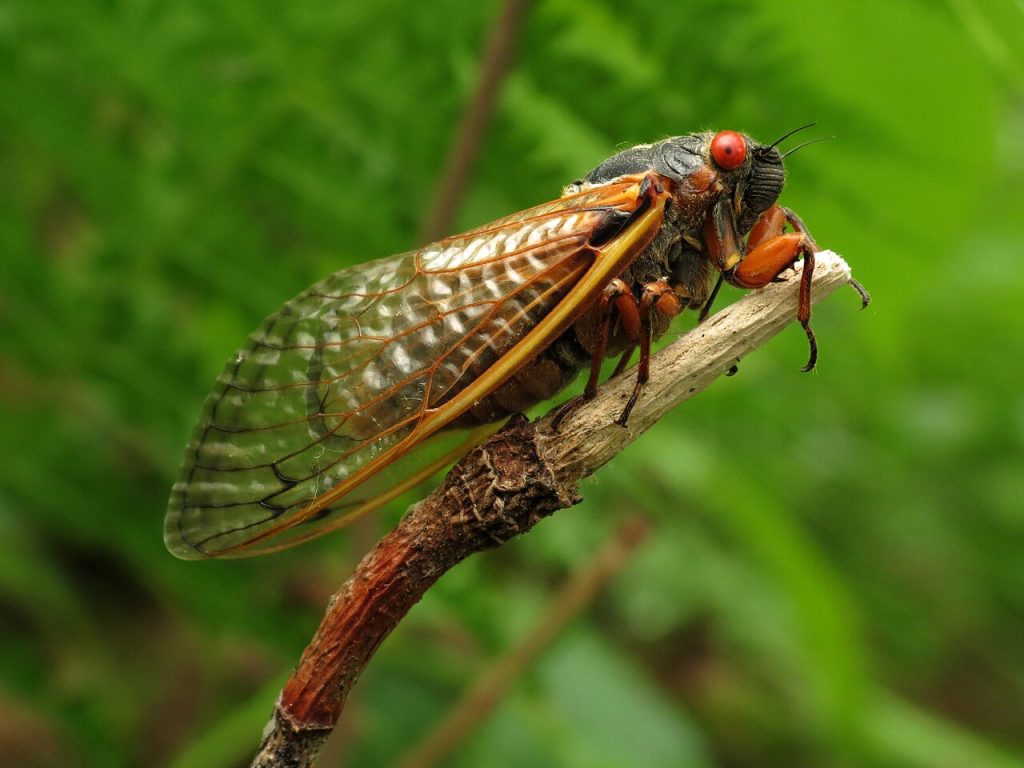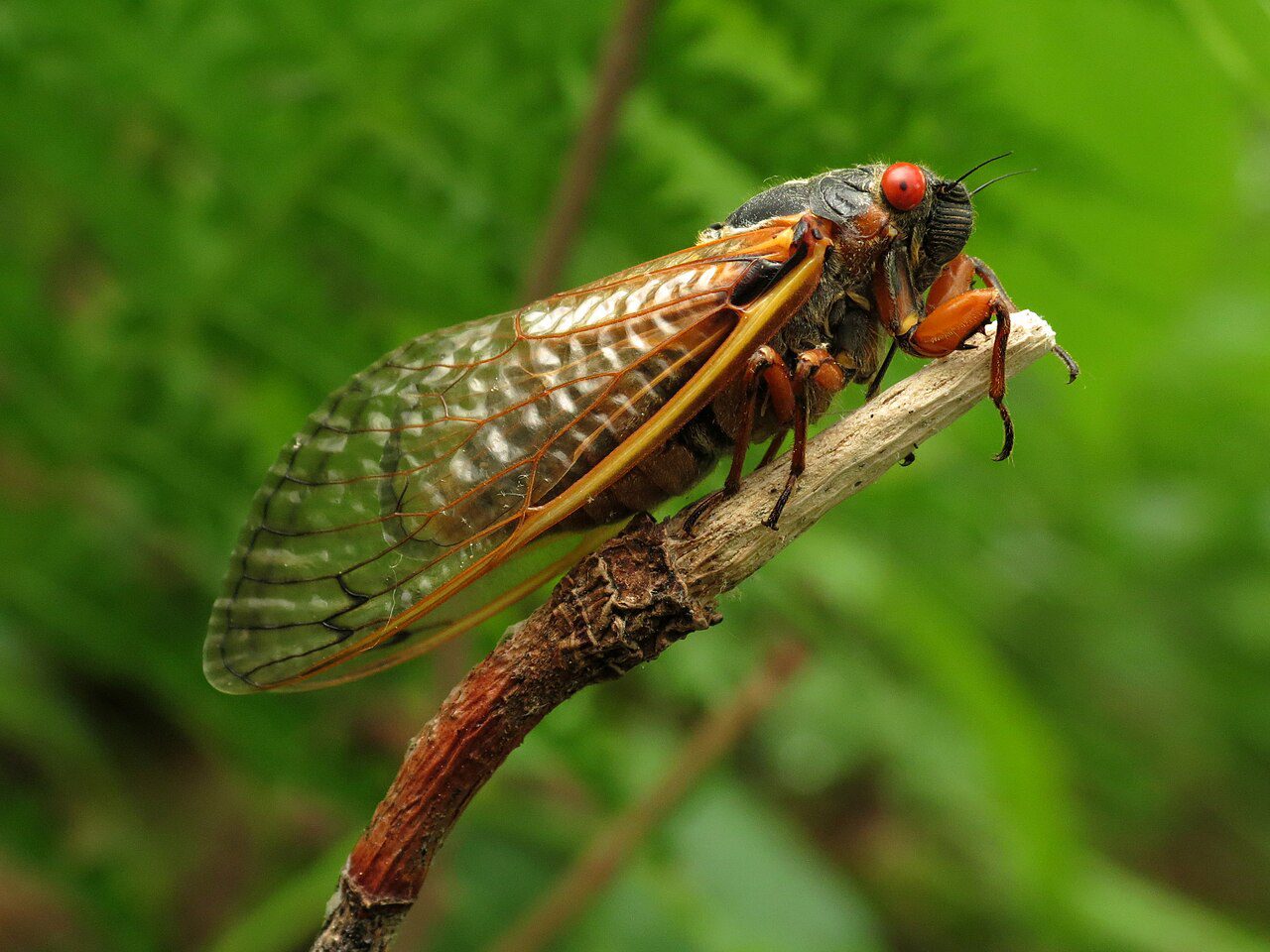
2024 is going to be a special year for people living in the Eastern and Midwestern United States. Brood XIII, a 17-year cicada brood, and Brood XIX, a 13-year brood, will both emerge together, which is a rare sight not seen since 1803. not seen since 1803. Here are some interesting facts about one of nature’s most amazing creatures to celebrate this event.
They come out of the ground every 13 or 17 years
Cicada nymphs spend 13 or 17 years underground, eating tree roots and staying in a dormant state. They have an internal biological clock that keeps track of the passing years, likely linked to tree biochemistry. In the final year, when the soil temperature reaches around 64 degrees Fahrenheit (17.8 degrees Celsius), a complex hormonal process makes them all emerge at the same time.
They are active underground and don’t hibernate. They live through all these years
Contrary to common belief, periodical cicadas are not hibernating underground all this time. They are constantly digging tunnels and burrowing to feed on tree roots. These tunnels not only help them find food but also improve soil aeration, benefiting the trees they feed on. However, as flying insects, their adult lifespan is only a few weeks, and all the cicadas will die by mid-July.
They have prime number cycles for protection
Periodical cicadas have 13- and 17-year life cycles to protect themselves from predators with synchronized breeding cycles. By emerging on prime number cycles, they aim to avoid encountering predators with matching cycles. However, this strategy can backfire if their timing is thrown off by environmental disruptions, making them vulnerable. Their sheer numbers also protect them, as trillions of cicadas emerge during their cycles, making it nearly impossible for hungry birds to finish them off. They are nature’s recyclers Despite being a nuisance to some, cicadas play a crucial role in the ecosystem. After their short adult lifespan, their decomposing bodies provide nitrogen that nourishes the trees they fed on as nymphs
Cicadas are found on every continent except Antarctica, with only seven species of periodical cicadas
Annual cicada species from Australia. Credit: David Emery.
Cicadas are split into two subfamilies: the
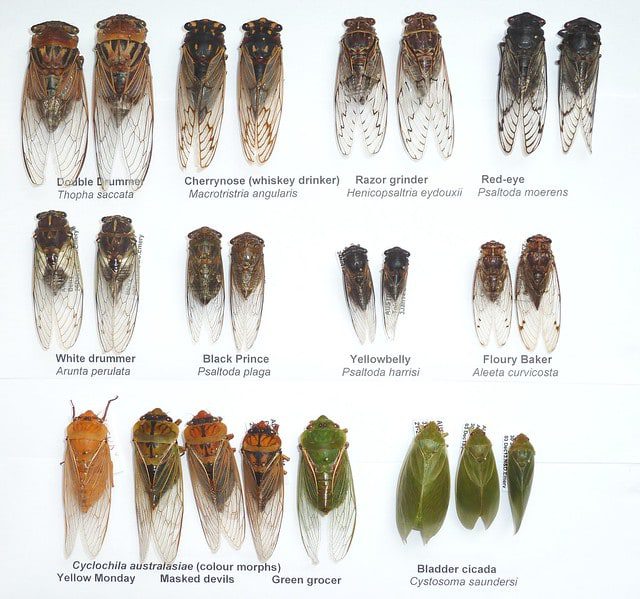
, with only two species in Australia, and the , with over 3,000 described species worldwide, and many more yet to be described. However, only the genus exclusive to North America has periodical cicadas.— what we refer to as periodical cicadas — come out every 13 or 17 years. “Regular” cicadas come out every year, which is why they’re simply known as “annual cicadas”. CicadidaeOnly males make the loud buzzing noise that is typical of cicadas. Magicicada Males create noise by vibrating tymbal organs located on the sides of the abdomen. They also make alarm calls when handled, as shown in this video by Greg Holmes.
Male cicadas solely produce their unique sound
Cicadas don’t sting or bite and pose no danger to humans. They do make a lot of noise and unpleasant smells, but they’re not harmful at all. However,
female cicadas can harm young trees
when laying their eggs. Their ovipositor, a sharp egg-laying apparatus, can cause small wounds in branches as they deposit their eggs. These wounds can weaken branches and make them susceptible to breakage. Fortunately, this can be easily prevented by covering vulnerable branches with cheesecloth during the emergence period. Some predators have a sweet tooth for cicadas A cicada killer wasp on top of its cicada prey. Credit: Judy Gallagher.
While cicadas are a valuable source of protein for many predators, some insects have developed a more specialized taste.
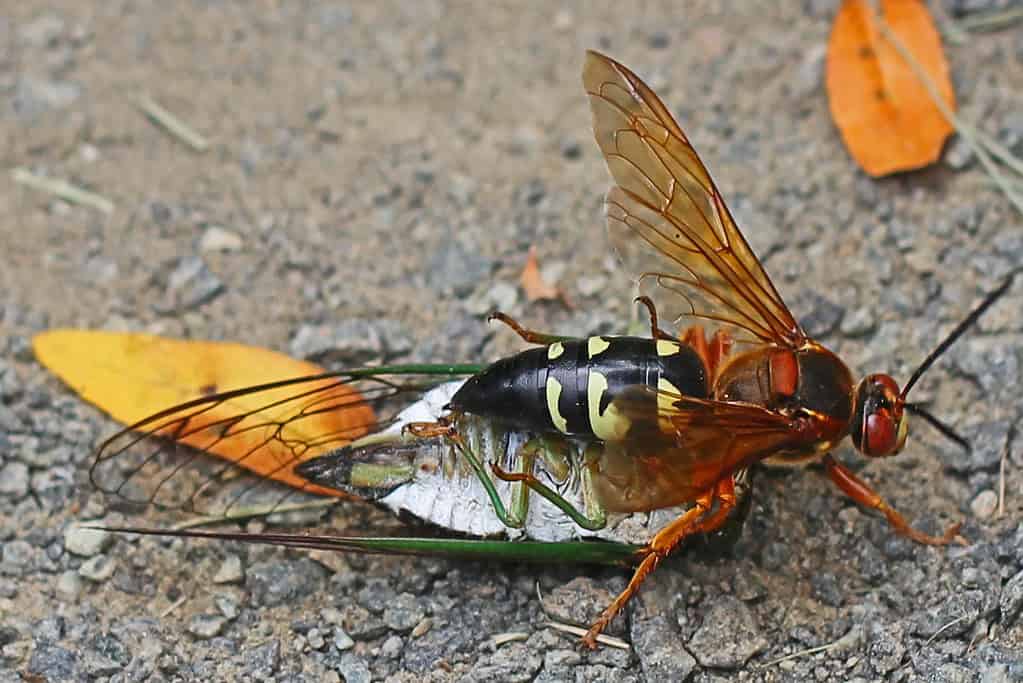
(Sphecius speciosus) are solitary, two-inch-long wasps that paralyze cicadas with their venomous sting and use them as provisions for their offspring. The insects create ‘cicada rain’ out of their pee Credit: Kevin Ambrose/The Washington Post.
The large appearance of cicadas can sometimes lead to a phenomenon called “cicada rain.” This doesn’t involve actual raindrops, but rather the expulsion of excess fluids from the cicadas’ bodies — yes, it’s basically cicada pee. As they prepare to molt, they expel this liquid that looks a lot like watery tree sap. While not exactly pleasant, it’s harmless and eventually dries up.
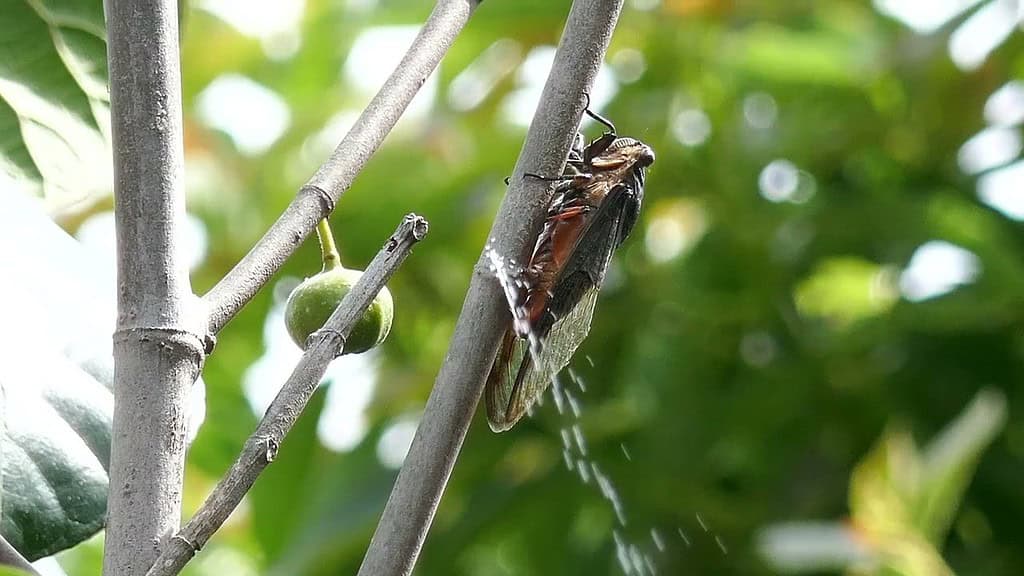
An infected cicada with the chalky fungal plug. Image credits:
G. Edward Johnson/Wikimedia Commons
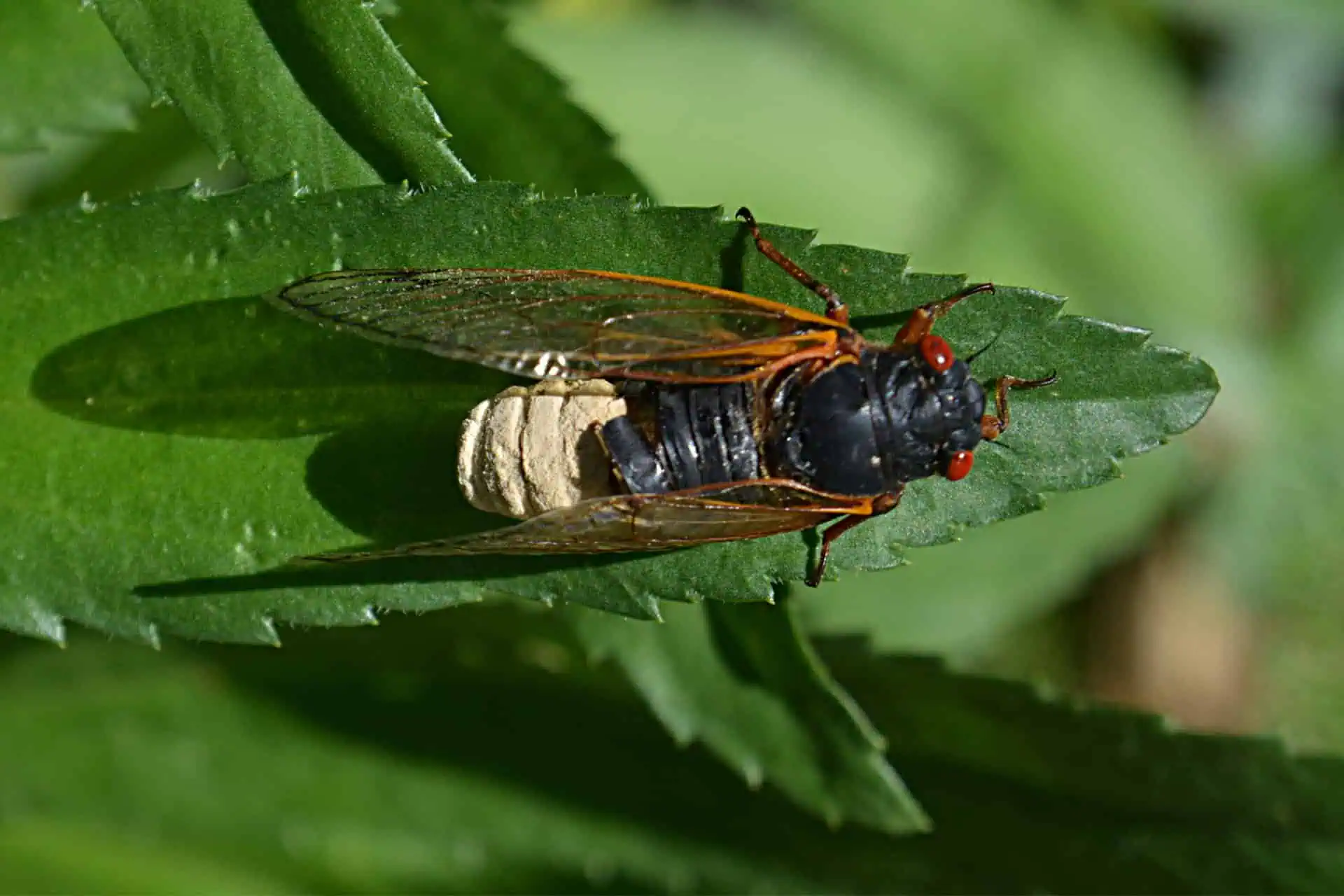
franchise. This fungus infects the cicada and takes control of its body, eventually pushing a fruiting structure out of the cicada’s head. As if that wasn’t gruesome enough, another type of fungus that lives off another organism called Massospora cicadina makes the cicada’s reproductive organs break down and causes the insects to become very interested in mating, which helps the fungus spread among cicadas. Some individuals actually consume them While cicadas are considered a delicacy in certain regions, opinions on their taste differ. Some people think they have a nutty and tasty flavor, while others find them plain or even unpleasant.
Cicadas, especially the young tenerals, can be used in a variety of ways in cooking and have a distinct shrimp-like taste when prepared properly. According to the University of Maryland’s
Cicada-licious cookbook
, the best time to collect these pale green bugs is in the early morning from tree trunks, and they should be kept in a paper bag. To keep their texture, it’s best to cook them right away or store them in the fridge, although freezing is the most humane way to end their lives. Before cooking — through methods like boiling, blanching, frying, or roasting — remove the non-tasty hard parts such as wings and legs. Cicadas can be used in a variety of dishes, from dumplings and banana bread to more inventive creations like tempura-fried cicadas and cicada-infused sushi and pasta, where they add an earthy flavor similar to shrimp.Discover these interesting facts about cicadas, from their unique life cycles to their important role in ecosystems.
Before cooking — through methods like boiling, blanching, frying, or roasting — remove the non-flavorful hard parts such as wings and legs. Cicadas can be incorporated into a variety of dishes, from dumplings and banana bread to more creative preparations like tempura-fried cicadas and cicada-infused sushi and pasta, where they provide an earthy taste reminiscent of shrimp.





